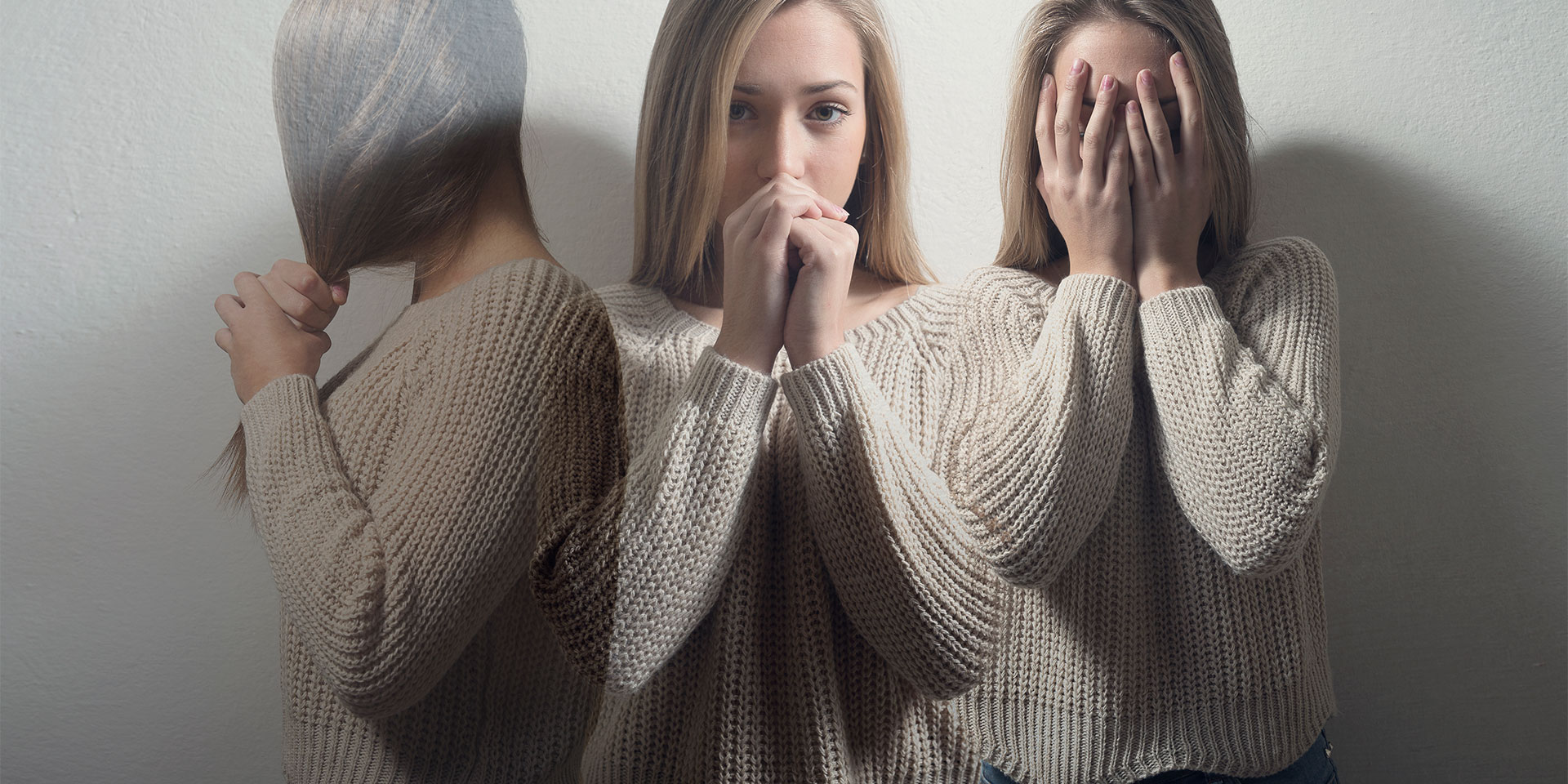If shame were personified, its main characteristic would be its ability to creep into the darkest depths, avoiding any trace of light and any discussion of itself.
A very good survival technique, in fact, because this is where shame gets its strength, from our fear of expressing it and thus neutralising its effects, explains researcher Brené Brown.
Exposing the shame that controls us
Talking about shame is a truly uncomfortable experience, but the ugly truth is that the more we avoid putting it into words, the more its control over our lives and emotional well-being increases.
At its core, shame is about fear of not being good enough, which causes us to withdraw and isolate ourselves from others, points out psychologist Harriet Lerner, noting that although we sometimes participate in collective fear, pain or anger, shame is experienced in solitude, away from the eyes of others.
After years of research, Brené Brown has defined shame as an “intensely painful feeling or experience of believing that we are flawed and therefore unworthy of love and belonging.” The situations in which we feel shame can be innumerable, but Brown says that in her research she has found 12 categories of shame, depending on the circumstances that create them (physical appearance, financial situation and occupation, motherhood/fatherhood, family situation, parenting, physical and mental health, addiction, sexual relationships, ageing, religion, trauma or the situation in which others label us).
By its very nature, shame makes us want to hide it. Sometimes we don’t even name it, referring to it with terms that express related emotions that are not interchangeable, such as humiliation, embarrassment or guilt. The problem with this approach is more than semantics—unless we correctly identify the emotion we’re experiencing, we allow shame to be the puppeteer pulling the strings of our behaviour and beliefs.
Is there such a thing as healthy shame?
When we experience shame, we most often feel intense discomfort, feelings of inadequacy, unworthiness, and a desire to hide, but we also feel anger (inward or outward), says Bernard Golden, an anger management specialist.
As painful as shame is, we dwell on it because it often masks other feelings we want to protect ourselves from, such as loneliness or sadness, explains relationship expert Margaret Paul.
In turn, shame can be a source of anger, depression and anxiety, which can have a negative impact on relationships. It takes its toll on our physical health, causing high blood pressure, stomach problems, insomnia, alcohol or drug addiction, and eating disorders. A 2008 study linking different types of shame to eating disorder symptoms found that externally induced shame (fear of being judged by others) was associated with symptoms of anorexia, and internally induced shame (through negative self-evaluation) was associated with symptoms of bulimia.
On the other hand, many experts argue that there is no link between shame and positive behaviour.
In fact, what we’re talking about is what some experts call toxic, unhealthy shame, which has little to do with feeling ashamed in a particular context (everyone gets a taste of this emotion at some point) and everything to do with the habit of self-evaluating through the shame filter. As Golden notes, there are theories suggesting that toxic shame arises from negative feedback received in childhood—we are told we are bad, inadequate, or wrong, rather than having specific behaviours labelled as such.
Brené Brown is one of the researchers who equates the concept of shame with that of toxic shame, believing that shame is inherently harmful and that the only healthy ‘shame’ is actually guilt.
Guilt is healthy because it makes us feel intensely uncomfortable about wrongdoing, leading us to make amends and correct reactions that are not in line with our values. Shame, on the other hand, is destructive because it undermines our sense of worth, alienates us from others, and even leads us to self-destructive or hurtful behaviour.
According to a 2019 study published by the American Psychological Association, people who hide a secret they’re ashamed of are more affected by thoughts about that secret than those who keep things that make them feel guilty to themselves. Secrets related to mental health, traumatic life experiences, or dissatisfaction with physical appearance were more likely to be associated with shame, while secrets related to hurting or betraying someone or distorting the truth were more likely to be associated with guilt.
In the case of secrets that burden us, we need to look at how they are reflected in our behaviour, says Michael Slepian, who coordinated the APA study. Precisely because guilt focuses our attention on what we need to do next, shifting from shame to guilt not only helps people cope better with their secrets, it also helps them find the resources to move forward, he concludes.
It’s a useful conclusion to keep in mind in a world where the belief that we can use shame to change other people’s behaviour is deeply ingrained, including in the minds of parents or educators.
Using shame as a lever for change
Speaking about the usefulness of using shame as a tool to discourage noncompliance, Krystine Batcho, a professor at Le Moyne College, explains why shaming a child or adult may not be the right behaviour change strategy—not even if shaming would actually stop the unwanted behaviour.
Before we admonish someone with a stinging “shame on you,” we should be aware that shame is rooted in the disapproval of others, whereas guilt is a personal belief that our behaviour was wrong, Batcho notes. So even when shame acts as an antidote to unacceptable behaviour, the price paid is too high when we consider its negative effects. On the other hand, if a person feels unable to change a wrongdoing, shame can cause them to hide and not only avoid public humiliation, but also miss the chance to get help, thereby reinforcing the unwanted behaviour.
In four decades of research, no study has shown the effectiveness of using shame against addiction.
After reviewing a number of studies on the use of “confrontation” in addiction treatment (a method of therapy that aims to shame patients through verbal attacks and even extreme humiliation tactics), researchers William Miller and William White found that in four decades of research, no study has shown the effectiveness of using shame to treat addiction. On the contrary, research has shown that shaming addicts can be harmful, and that counsellors who use an empathic, supportive style get the best results.
When we tell our children that they should be ashamed, we should know that messages from grown-ups shape a child’s self-image, and the impact is all the greater when the sender is a loved one or someone in authority, says Batcho, citing studies that show high levels of shame in pre-school children are linked to the emergence of depression at this young age.
How do we become resilient to shame?
Moving from shame to self-compassion and healing involves at least three stages, says Brené Brown. First, we need to recognise shame and its symptoms, as well as the trigger. Second, we need to practise critical vigilance, learning to identify the ideas and expectations that trigger shame (Are they realistic? Can they be fulfilled?).
Sharing the experience we’re going through with a close, empathic person is a good resilience-building strategy, because shame can’t survive in an empathic environment, Brown argues. When we are able to talk about shame with others, we can achieve healing and change the trajectory of our lives.
Building close relationships with people who care about their wellbeing increases the effectiveness of a person’s efforts to free themselves from shame. This strategy is all the more valuable because it is known that people controlled by shame tend to recreate toxic childhood relationships, either because they don’t believe they deserve better, or because they are redrawing the outlines of the only normalcy they have ever known.
If shame is rooted in abuse, neglect or other traumatic experiences, a therapist may be needed to guide the person in identifying the impact of shame on daily life and the most effective strategies to counteract it.
Sin, shame and hiding
The Bible shows us that shame was the first consequence of falling into sin. Aware of their nakedness and the fact that they were about to reap the fruits of their disobedience, Adam and Eve hid from the face of the One who had been their joy.
From then until today, we continue to hide whenever shame takes over, and this is a normal response, provided we hide in the right place, writes Christian author Jon Bloom. Analysing the case of King David, who tried to erase the shame of adultery by murder, and that of the Samaritan woman, who was ashamed of moving from one failed relationship to the next, Bloom notes that in a world of sin, our instinct to hide is natural, but that the places we seek refuge are as numerous as they are false, whether it’s social media, Netflix, the garage, the office, fashion, housework or whatever.
The worst thing that can happen to us, our shame whispers at the back of our minds, is to be known for exactly what we are, and to be rejected.
The only place where we can hide, where we can be healed of our shame (whether we have plunged into it ourselves or others have forced us to taste its bitterness) is in the presence of the Man of suffering, who walked a path of the most heartbreaking shame for our salvation—”He was despised, and we held him in low esteem” (Isaiah 53:3).
The worst thing that can happen to us, our shame whispers at the back of our minds, is to be known exactly for what we are, and to be rejected because we are not good enough. There is only One who knows all our secrets—every imperfection, every crack and every blemish, and yet no one will ever love us more than He does. And the beauty of that love is the best medicine for our own shame.
Carmen Lăiu is an editor at Signs of the Times Romania and ST Network.




















